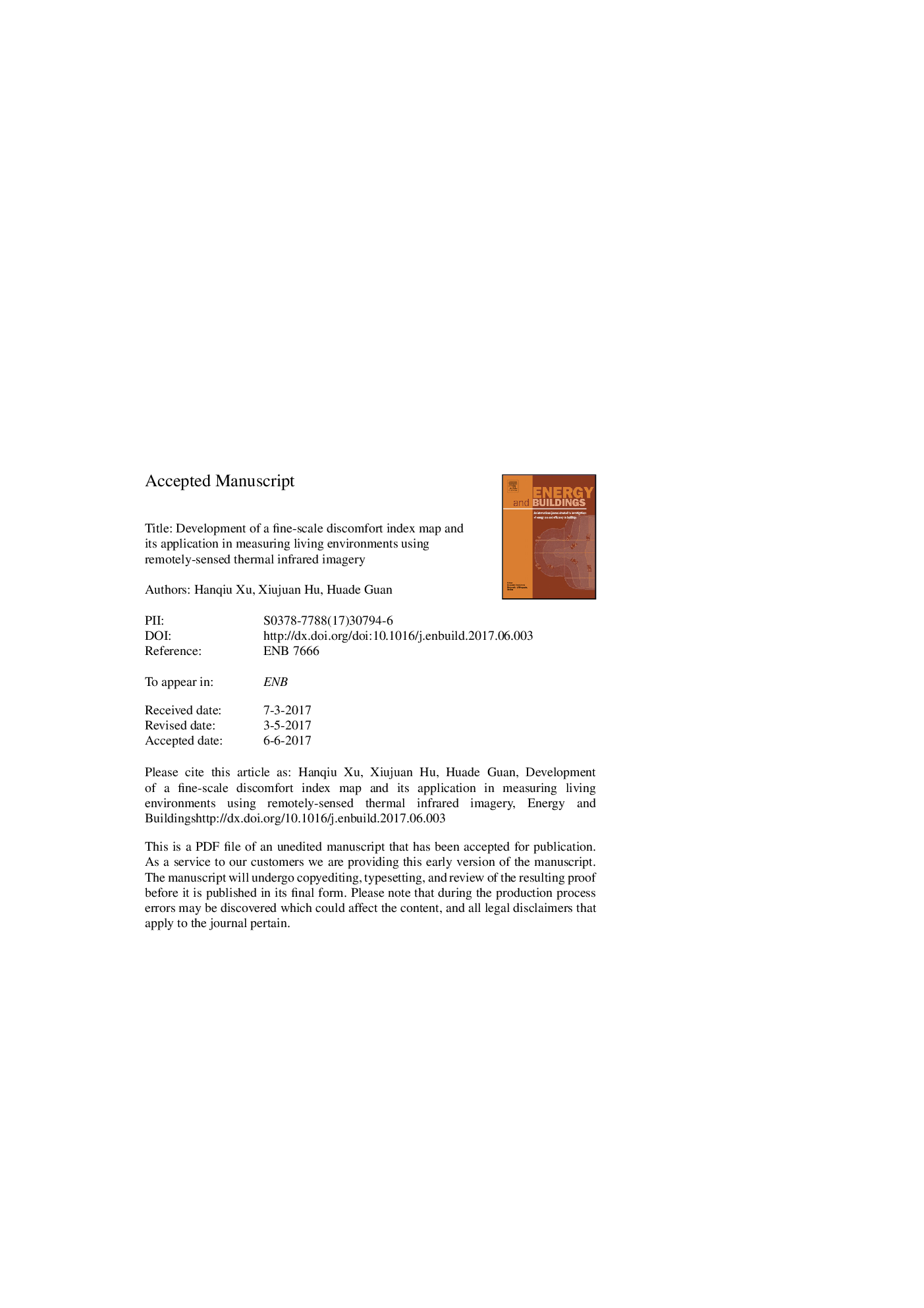| Article ID | Journal | Published Year | Pages | File Type |
|---|---|---|---|---|
| 4914146 | Energy and Buildings | 2017 | 29 Pages |
Abstract
The discomfort index (DI) is an important indicator that measures the human heat sensation for different climate conditions. Currently, DI of a city is usually calculated using data from a single or a few weather stations and hence does not accurately represent various thermal discomfort states of the whole city. In addition, because the result of existing DI is just a single numeric value, it does not reveal the spatial variation of thermal discomfort levels and thus is unable to represent actual living environment conditions. This greatly limits the DI application. Taking Fuzhou of southeastern China as an example, this paper proposes a technique to produce a fine-scale DI map by combining a sharpened Landsat thermal infrared image with in-situ measured meteorological data. The DI map clearly reveals the spatial details of DI in different locations of the city. It provides quantitative characterization of the living environment of each DI level based on a 3-graded DI map. This greatly expands the application range of the index. The quantitative analysis results show that the area of high building density substantially increases outdoor human thermal discomfort sensation, while high vegetation and water covers reduce the discomfort sensation. The impact of built surface to human discomfort sensation is near two times more than those of vegetation and water in the Fuzhou case.
Related Topics
Physical Sciences and Engineering
Energy
Renewable Energy, Sustainability and the Environment
Authors
Hanqiu Xu, Xiujuan Hu, Huade Guan, Guojin He,
